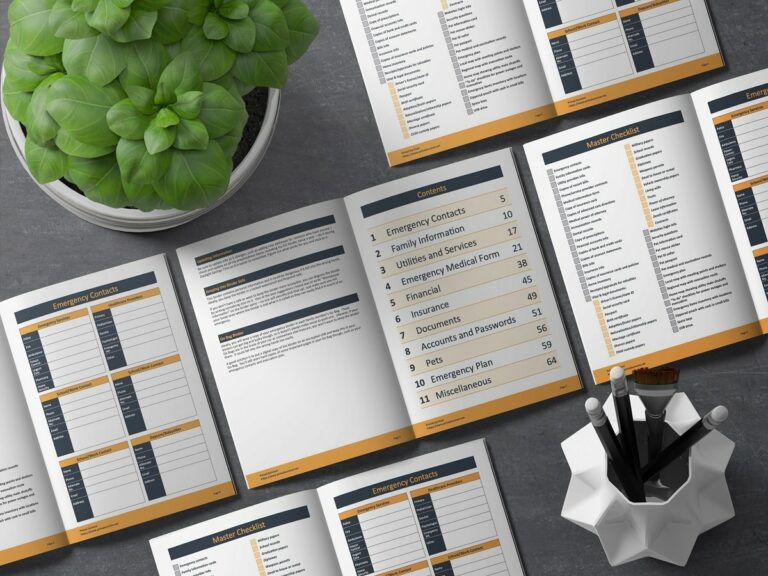One of the most annoying things when looking for outdoors gear is how brands use the terms “waterproof” and “water resistant.” They are purposely used in a confusing manner – often implying that water-resistant is the same as waterproof.
They aren’t the same!
There are some important differences between waterproof and water-resistant that you need to know before shopping for any outdoor gear. This includes things like rain jackets, pants, flashlights, and survival backpacks.
Oh, and contrary to what you might think, waterproof isn’t always better than water-resistant. I’ll explain the difference between the two and then tell you why.
Waterproof vs. Water-Resistant
When a product says “waterproof”, it should be impenetrable to water. This means that the actual FABRIC won’t let water through and that the SEAMS will be taped to keep water out. For gear, waterproof means that it can get wet or even submerged and still function.
By contrast, water-resistant products means that they have been treated in a way that repels water. That’s why these products are sometimes also called “water repellent.”
Water-resistant products can usually hold up well in light, short rains. But, use them in any sort of downpour or prolonged shower and they will get drenched!
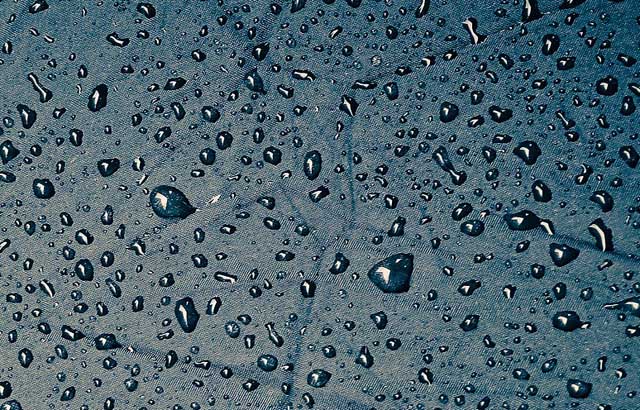
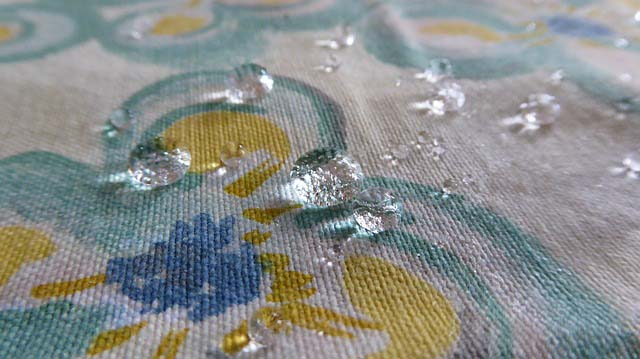
Waterproof Clothing (And Why It Generally Sucks)
You might think that waterproof clothing is better than water-resistant. However, waterproof clothing is usually terrible for most situations.
Why? Because waterproof materials are not breathable.
The key to dressing in the outdoors is to use the layer system. But, if any of your layers is not breathable, it will screw up the entire layering system.
If you wear non-breathable waterproof clothes…
You WILL end up sweating.
Sweating means you get WET (kind of ironic since waterproof clothing is supposed to prevent this).
Wet means you will get COLD.
This doesn’t necessarily means waterproof clothing is bad for every situation. But you need to pay careful attention to the waterproof and breathability rating before you buy a piece of clothing.
Waterproofness Rating of Clothes
How waterproof a piece of clothing is rated in millimeters. This refers to how many millimeters of water they can withstand before being penetrated.
- 1,500mm: This is a very low level of waterproofness. Suitable only for light rains.
- 5,000mm: This level is fine for medium rains but won’t do well in long downpours.
- 10,000mm to 15,000mm: This level will withstand most rains and snow. However, it will get wet when put under pressure. For example, the area squished by your backpack straps will end up wet.
- 15,000mm to 20,000mm: This is very high level of waterproofness suitable for the tropics and even hurricane weather.
Breathability Rating
Likewise, breathability also has a rating system. It is rated by how much vapor can pass through a square meter of the material. For example, a rating of 10,000m2 means that 10,000 grams of vapor can go through the material in 24 hours.
- 5,000 to 10,000 grams/m2: This is a very low amount of breathability. You will start sweating if you do any level of physical activity in this gear!
- 10,000 to 15,000 grams/m2: This is a good amount of breathability. It is good for hiking.
- 15,000 to 20,000 grams/m2: This level of breathability is great for high-humidity areas or intense physical activity.
The more waterproof a material is, the less breathable it is going to be. You simply will not find clothing is which 15,000mm waterproof but still breathable!!!
Oh, and any waterproof clothing which actually is breathable is going to be incredibly expensive. I’m talking over $300 for a good pair of waterproof pants.
You can see the relationship between waterproof and breathability here. Note that the more breathable materials are generally a lot pricier!
| Material | Breathability | Waterproofness |
|---|---|---|
| Gore-Tex 3L | 17,000 | 28,000 |
| eVent 3L | 25,000 | 30,000 |
| Gore-Tex Pro 3L | 15,000 | 28,000 |
| Helly Tech Performance 2.5L | 10,000 | 10,000 |
When Waterproof Clothing Makes Sense
Water-resistant clothing is better for most situations. It does a good enough job of keeping you dry without making you sweat like crazy.
If I were prepping for doomsday or a situation where I might have to hike through a heavy downpour, then I’d go with waterproof. I’d just have to keep it tucked away in my pack until needed – which means much more weight and bulk (read these tips for cutting weight from your survival pack).
Below is a general overview of when to choose waterproof/water-resistant for jackets and pants.
Rain Jackets
Obviously, your rain jacket always needs to be completely waterproof. I use a very lightweight waterproof jacket. If it is cold and rainy, I can just wear it over a lot of layers under the jacket to stay dry and warm.
When it isn’t raining, I can just keep the rain jacket packed away without it weighing me down too much. Only when hiking somewhere very rainy and cold (like when I was in the Andes Mountains during rainy season) do I use a thicker waterproof jacket with multiple layers.
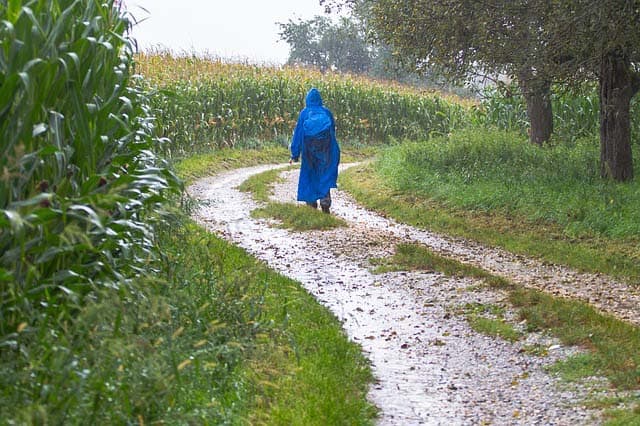
Winter Jackets
Winter jackets do NOT need to be completely waterproof since the snow just falls off anyway. If you did get a waterproof winter jacket, you’d end up sweaty quickly.
Instead, choose a winter jacket which has a water-resistant shell material. Remember that you need to wash them carefully and apply a waterproof coating before each season.
Pants
For hiking in the summer and non-rainy seasons, I have a pair of water-resistant lightweight pants. If I do get caught in a rain shower, I put on my waterproof jacket. The pants get wet, but they dry quickly – they’ll even dry while I hike. Or I can hang them on a line to dry.
In seasons where there is a lot of rain though (such as trekking during early spring), waterproof pants can be a lifesaver. You’ll freeze if you try to hike with wet pants!
Preferably you get waterproof which have many air vents so you don’t end up sweating your butt off (literally). There are also waterproof pants with snaps down the sides so they can quickly be put on over your regular pants.
How to Wear Waterproof Clothing
Waterproof clothing is so terrible that one hiker said,
“I bet the clothing under your jacket will get wet, if not soaked-through by sweat and condensation. Like so-called waterproof hiking boots, hiking rain jackets are another item of hiking gear where the expectations don’t match the results.”
He goes on to say that “you should think of a hiking rain jacket as a wet suit that will keep you warm when you’re wet, instead of preventing you from getting wet.”
Basically, you need to wear an insulating hydrophobic layer (like fleece or wool) under your waterproof clothing. Don’t expect to stay dry. However, the waterproof fabric will help you stay warm by preventing evaporative cooling. You can read more about that system here.
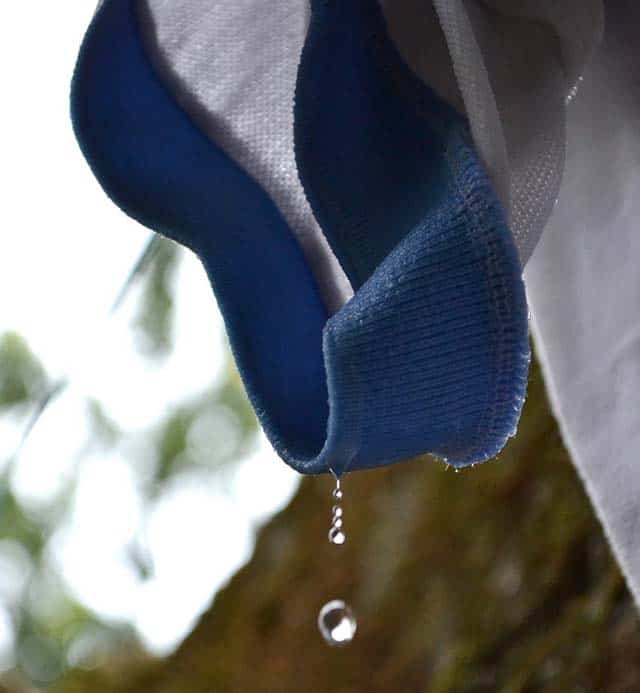
Water-Resistant Clothing
As I’ve been saying, water-resistant clothing is usually better than waterproof for most situations. However, not all water-resistant clothing is created equally. There are two main types: laminates and water-resistant coatings.
Of the two, laminates are generally best.
Laminates
This includes materials like Gore-Tex. The material is made up of a very thin membrane which prevents most water from passing through it, especially when the water isn’t applied at a high pressure (light rain vs. heavy shower). The membrane still allows vapor to pass through, so it is breathable.
The downside to laminates is that they are thin and can be torn/damaged easily. They can also be very pricey.
Coatings
These are made by spraying or painting a waterproof coating to the material. To keep them breathable, holes are put into the coating as it is laid down.
Generally, materials with a water-resistant coating are much cheaper than laminates. But they are not very breathable, can be very bulky, and the coating will eventually wear off.
Waterproof Gear
With gear like flashlights and headlamps, breathability doesn’t matter. So, always choose waterproof! The level of waterproofness is rated using IP – or Ingress Progress.
- IPX-0: Absolutely no protection against water whatsoever.
- IPX-1: Protected against vertically dripping water for a short amount of time when the object is oriented normally.
- IPX-2: Protected against vertically dripping water when the object is tilted up to 15° from normal orientation.
- IPX-3: Protected against water falling as spray when the object is rotated up to 60° from normal orientation.
- IPX-4: Protected against a splash of water from any direction.
- IPX-5: Protected against 6.3mm nozzle stream of water from any direction.
- IPX-6: Protected against 12.5mm nozzle stream of water from any direction.
- IPX-7: Protected against ingress of water when object submerged up to a 1-meter depth.
- IPX-8: Object suitable for continuous immersion in water at a depth of more than 1 meter.
For most outdoor needs, an IP rating of IPX- 5 is suitable. However, if you are prone to falling into creeks, then you’ll want an IPX-7 or 8 rating. 🙂
Of course, waterproof gear with a high IP rating is more expensive. If you can afford it, always choose a high IP rating. If you are on a limited budget, then choose a high IP rating for the most crucial or most sensitive gear – like headlamps, solar chargers, and GPS devices.

Backpacks
Most backpacks are water-resistant and not waterproof. The reason is that:
- If backpacks were made from waterproof material, they would be very thick and bulky.
- Waterproof material is very stiff, so it would be hard to pack the backpack
- You’d be limited to how many openings/pockets you could have since zippers are never truly waterproof
- Opening/closing the pack would be annoying (you have to roll the tops of waterproof backpacks to close them)
Instead of making backpacks out of waterproof materials, manufacturers generally include a waterproof backpack cover. Or you can buy a cover to fit your pack.
These waterproof covers work great in storms. Sure, your pack straps will get wet, but the stuff inside your pack stays dry.
A waterproof cover will not keep your gear dry if you fall into a stream though!
Likewise, they aren’t going to protect gear from water if you intentionally have to go through wet places, like when caving or canyoning.
We go in-depth on this and more in our guide to the best survival backpack.
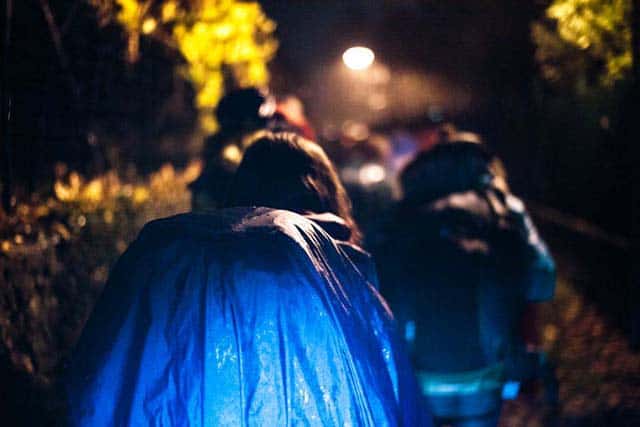
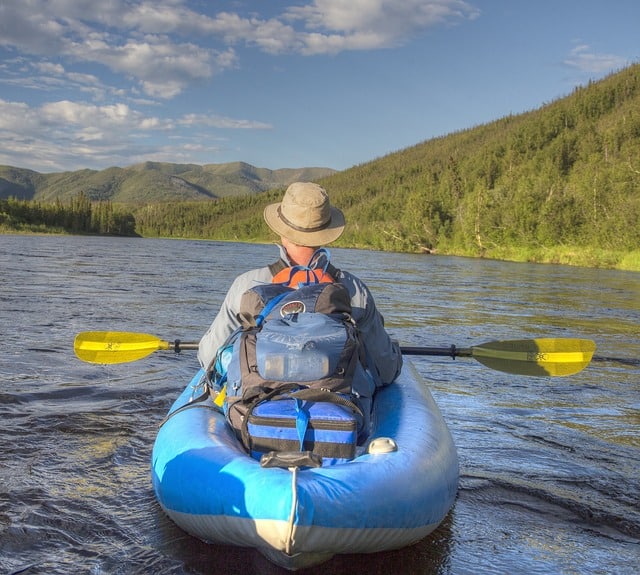
What’s a good solution for keeping your gear dry? There are two options:
- Get a backpack which is actually waterproof.
- Use a dry bag.
The first option is good if you know you will be getting wet. The pack will keep everything inside dry. However, you’ll have to deal with all the annoying things that were mentioned above (like having a big, bulky pack without pockets and is annoying to open/close!).
A better option for people who don’t plan on getting wet (but want to play it safe) is to get a dry bag. It is basically a smaller version of a waterproof backpack. Most are around 5 liters in size.
You put your most important gear (headlamps, GPS, etc.) inside them and keep it inside your pack. If you fall in a creek, your clothing will get wet, but at least all the crucial gear you put in your dry sack will be safe.

